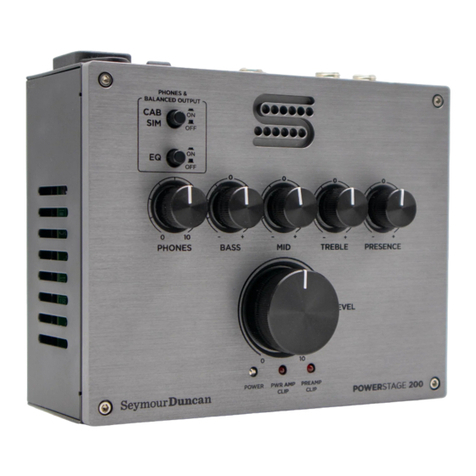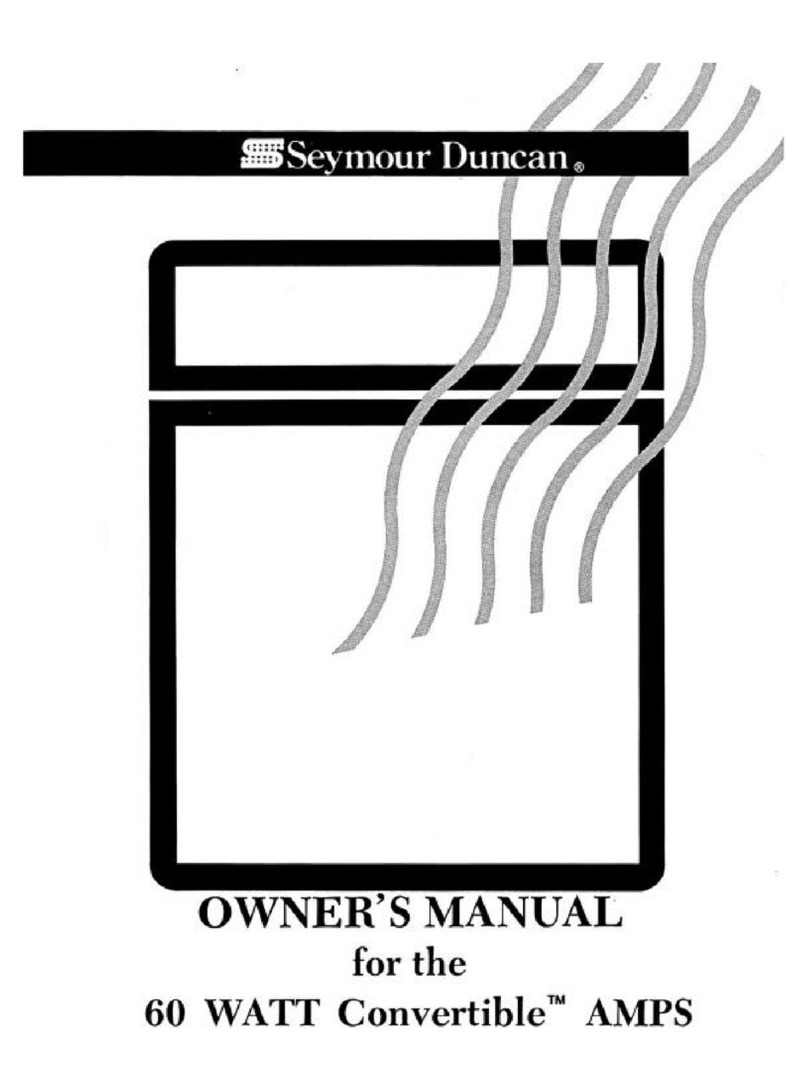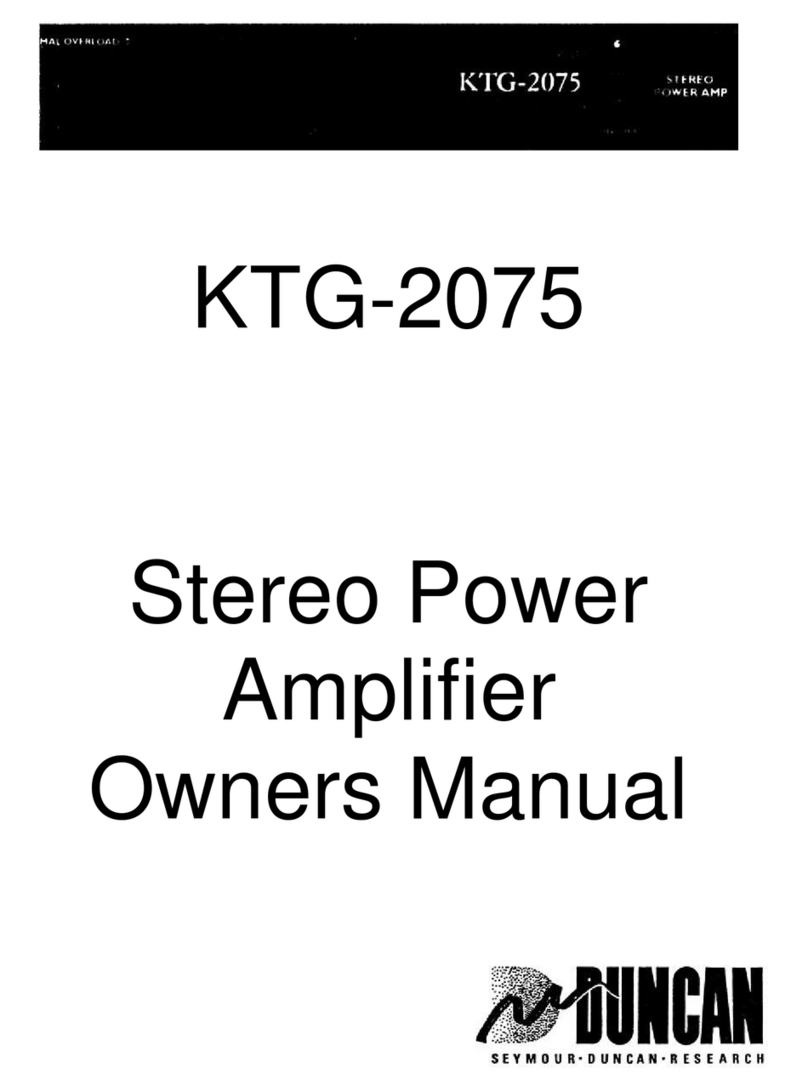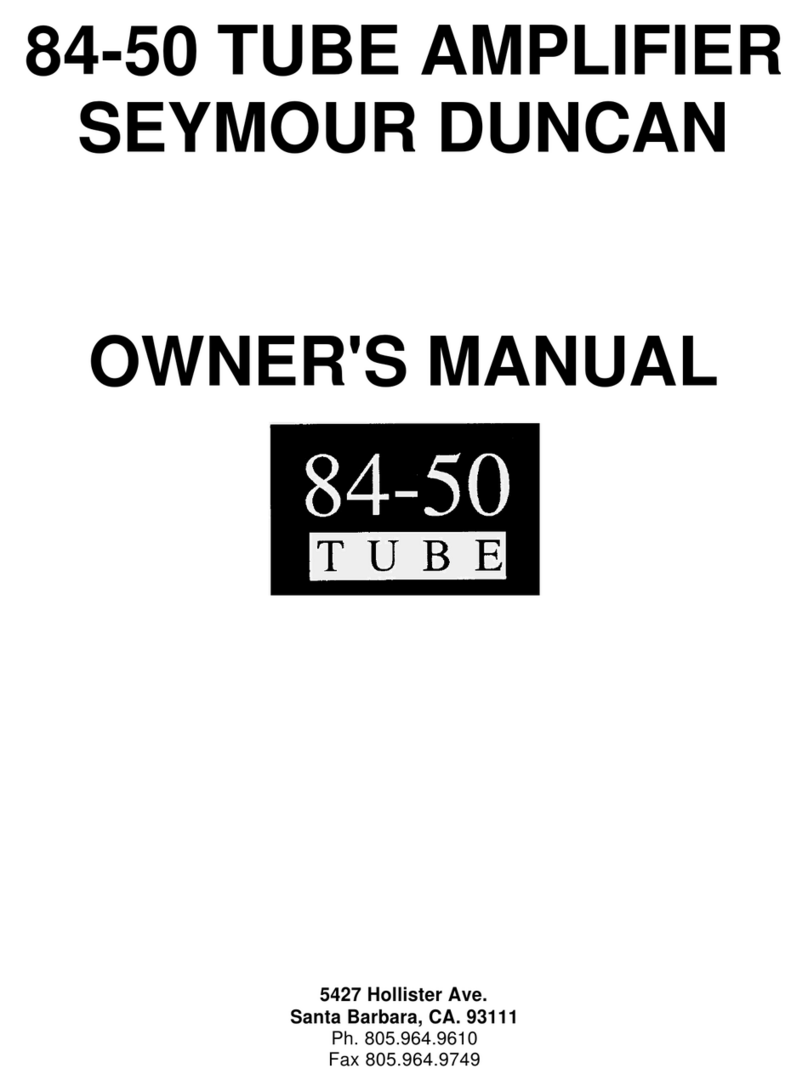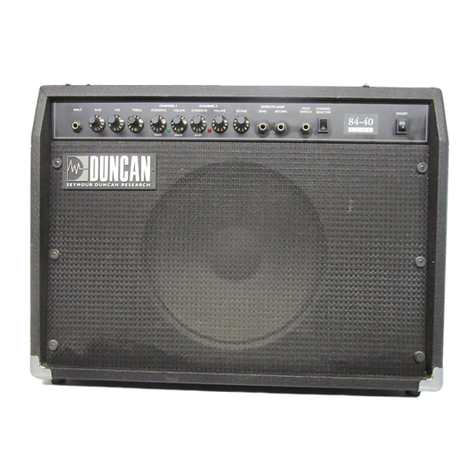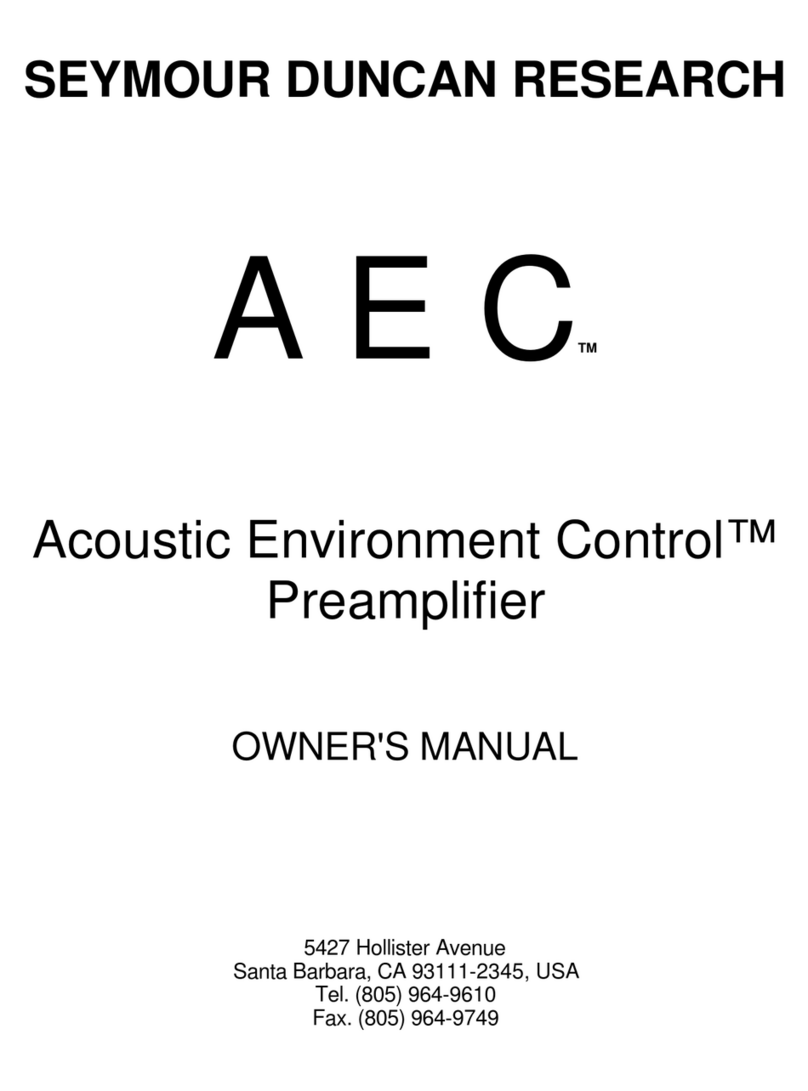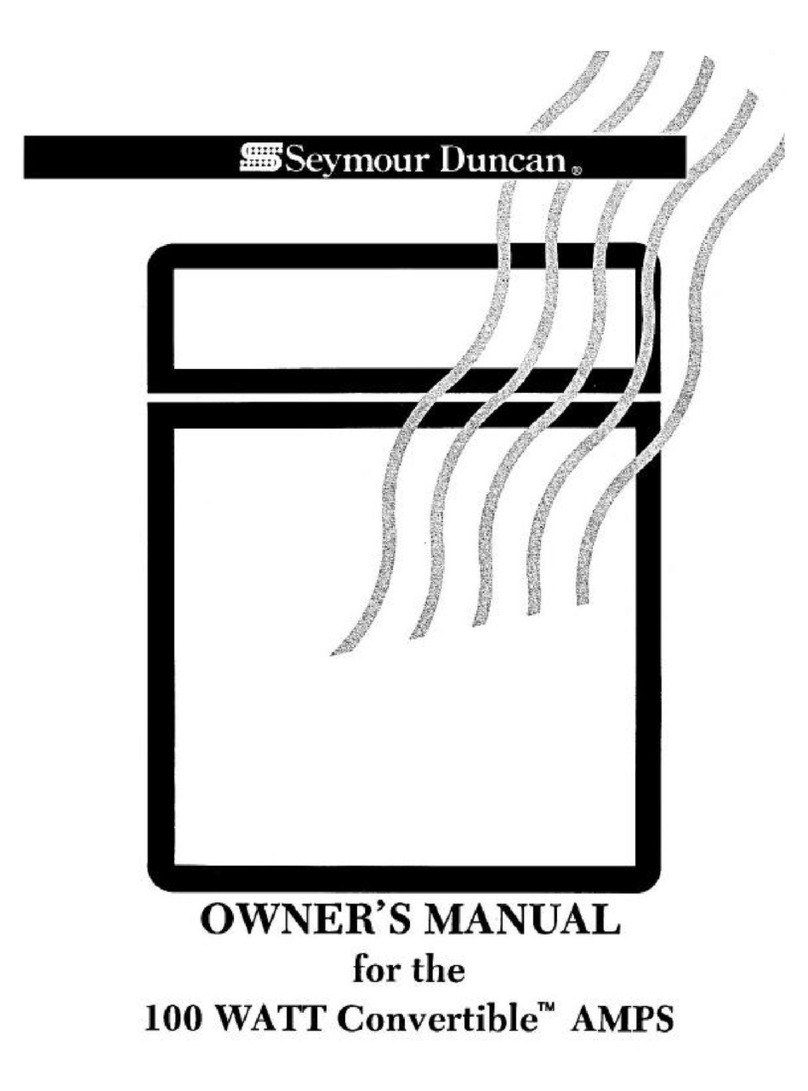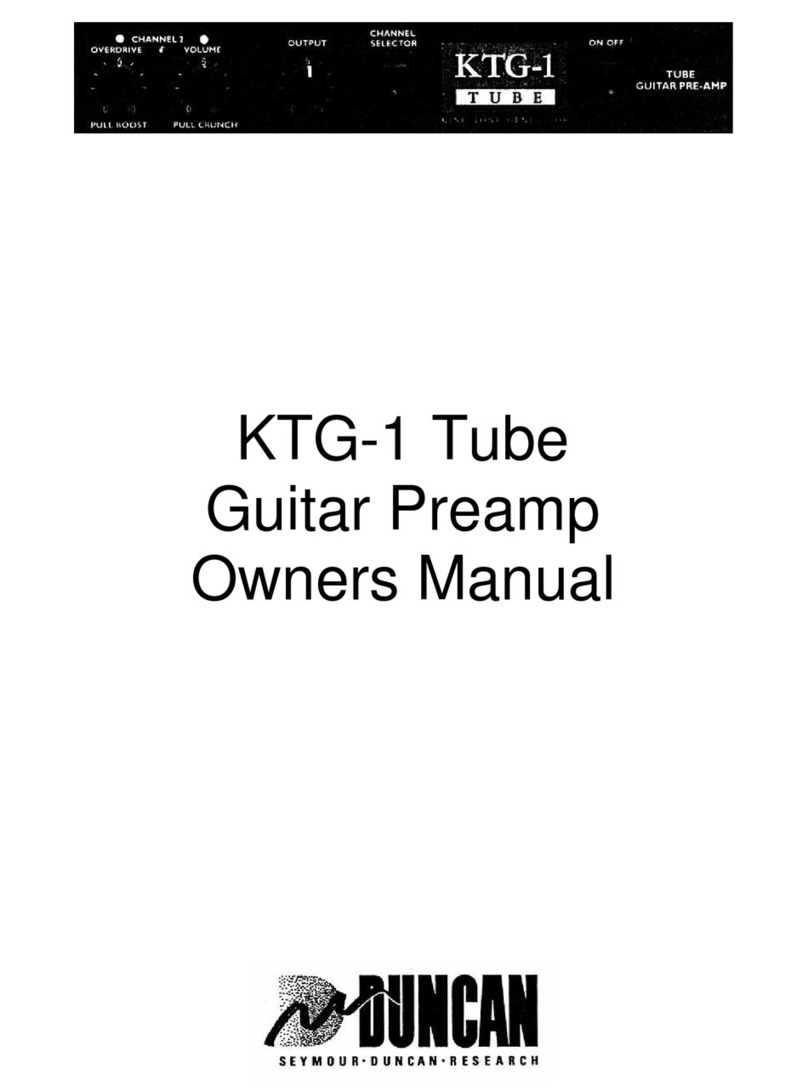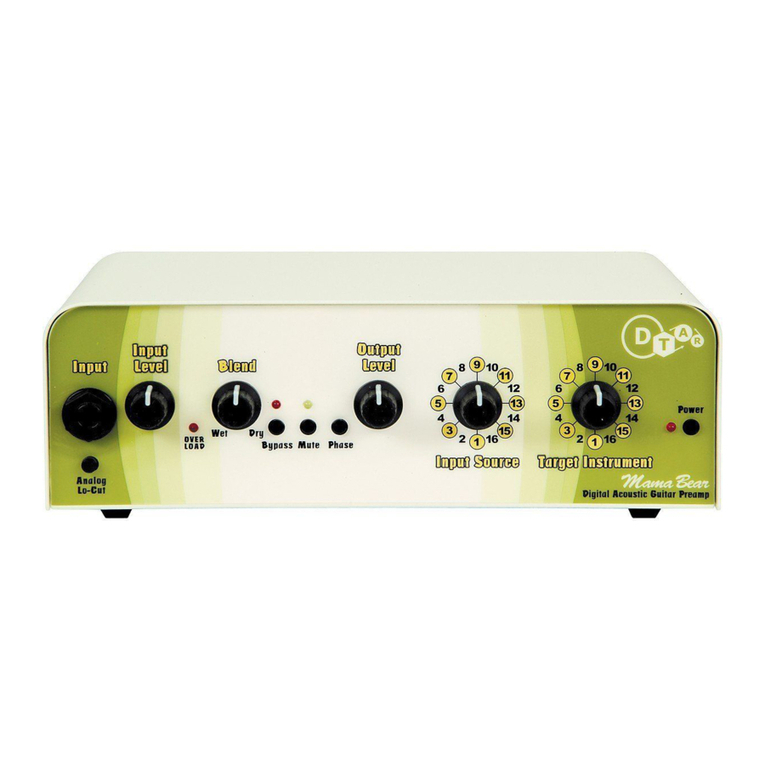
demanding conditions (like extremely high volume settings) the current limiting circuit
may engage and cause audible distortion.
In the Bridge mode, optimum amplifier performance is realized with an 8-ohm load. A 4-
ohm load is acceptable, but not recommended. See page 10 for the diagrams showing
proper hook-up configurations for the different operation modes.
5. EFFECTS LOOP: Use this circuit with your effects for the least amount of hiss. In
older design amps, players had to plug their basses directly into effects and plug the
effects into the input jacks on their amps. With the Bass 400 x 2, you can plug your bass
into the Bass Input jack and run your effects through the Effects Loop.
"Effects Send" should be connected to the input of your effect using a normal guitar
cable. "Effects Return" should be connected to the output of your effect using a normal
guitar cable. You want the signal to come OUT of your amp INTO the effect and OUT of
the effect INTO your amp.
Output impedance is 10k ohms.
TROUBLESHOOTING
The following table should enable you with little or no knowledge of electronics, to isolate
the cause of some problems you may experience with your amplifier and the steps
required for repair. Most causes of impaired amplifier performance are due to minor
problems or irregularities, which can be easily corrected by you. However, if you cannot
identify the cause of the problem using the table below, or if it indicates your amplifier to
be defective and in need of repair, return the unit to an Authorized Seymour Duncan
Service Center or call (805) 964-9610 for a Return Authorization number.
Symptom Probable Cause Remedy
Amp does not light up and
come on when power
switch is "ON".
1) Power not connected 1) Ensure power cord is
plugged into operative
power outlet
2) Blown amp fuse 2) Check amp fuse; replace
if blown with ABC-10. If it
continues to blow, call
service center
Amp lights up, but no sound
when power switch is "ON" 1) Bad guitar cable 1) Replace cable
2) Bad speaker cable 2) Replace cable
3) Effects are hooked up 3) Reverse hook-up cables
